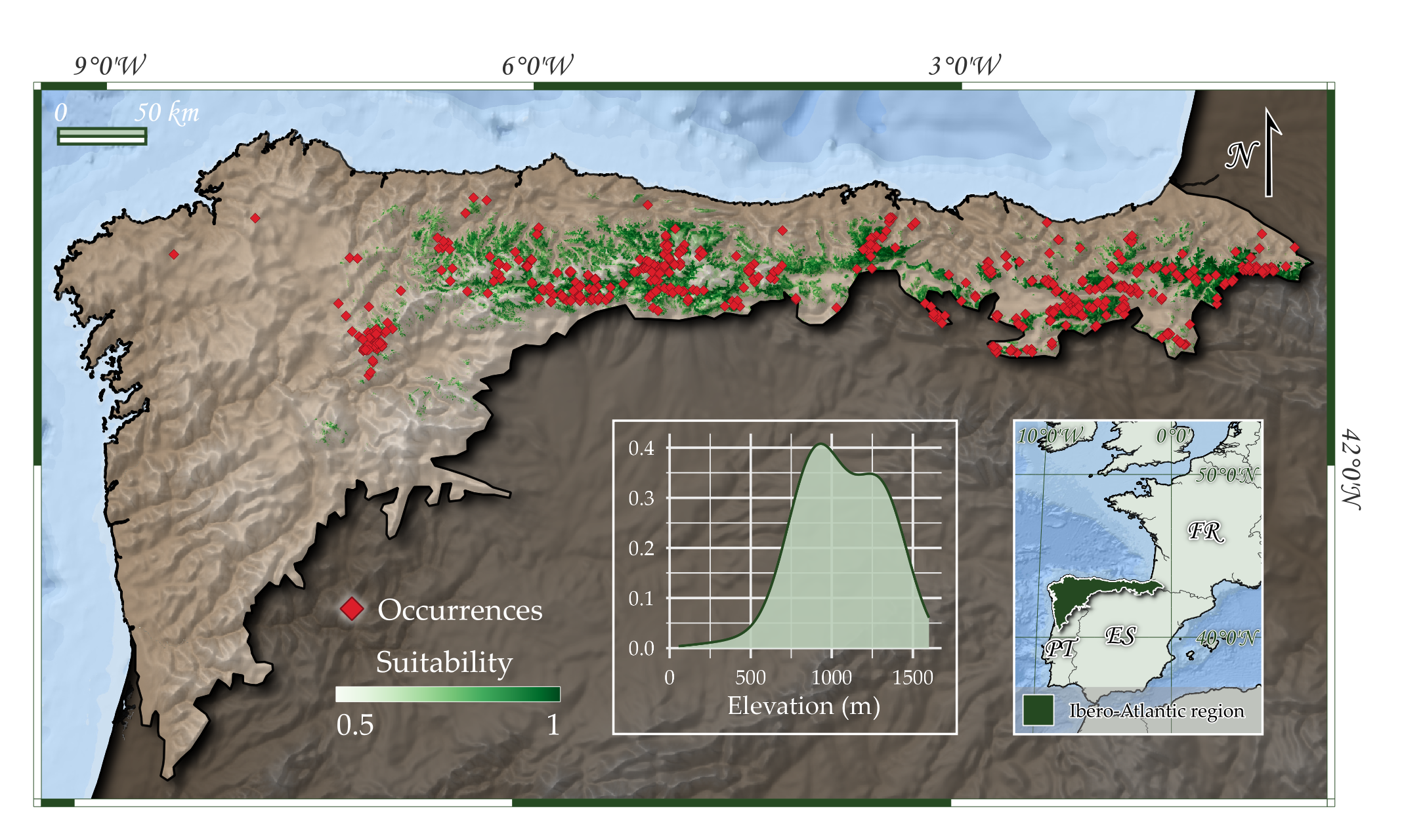T172 Pyreneo-Cantabrian neutrophile Fagus forests
Description
Mesophile deciduous forests potentially and often actually occupying large areas wherever summers are cloudy and rainy enough to support the high transpiration demands on which beech’s aggressive competing behavior depends. The large, horizontally displayed leaves of beech cast a deep shadow on the understorey, generating very selective conditions and consequently a very distinctive floristic composition, including early-spring geophytes and a number of sciophilous, even partially mycoheterotrophic plants. For its climatic requirements, beechwoods prefer north-facing slopes (less producitve as croplands or pastures, thus having been reserved for timber and less deforested by traditional agrarian communities, leading to the relative abundance of these forests) and are rare in lowlands, increasingly so towards the south and the west of the ecoregion, where they ultimately disappear altogether, as happens in Portugal. In calcareous mountains, uninhabitable to T1D7, these forests may make up the treeline.
Floristic Composition
Frequent species
Indicator species
Phytosociology
- Carici caudatae-Fagetum sylvaticae
- Carici sylvaticae-Fagetum sylvaticae
- Epipactido helleborines-Fagetum sylvaticae
- Neottio nidi-avis-Fagetum sylvaticae
Regional distribution
